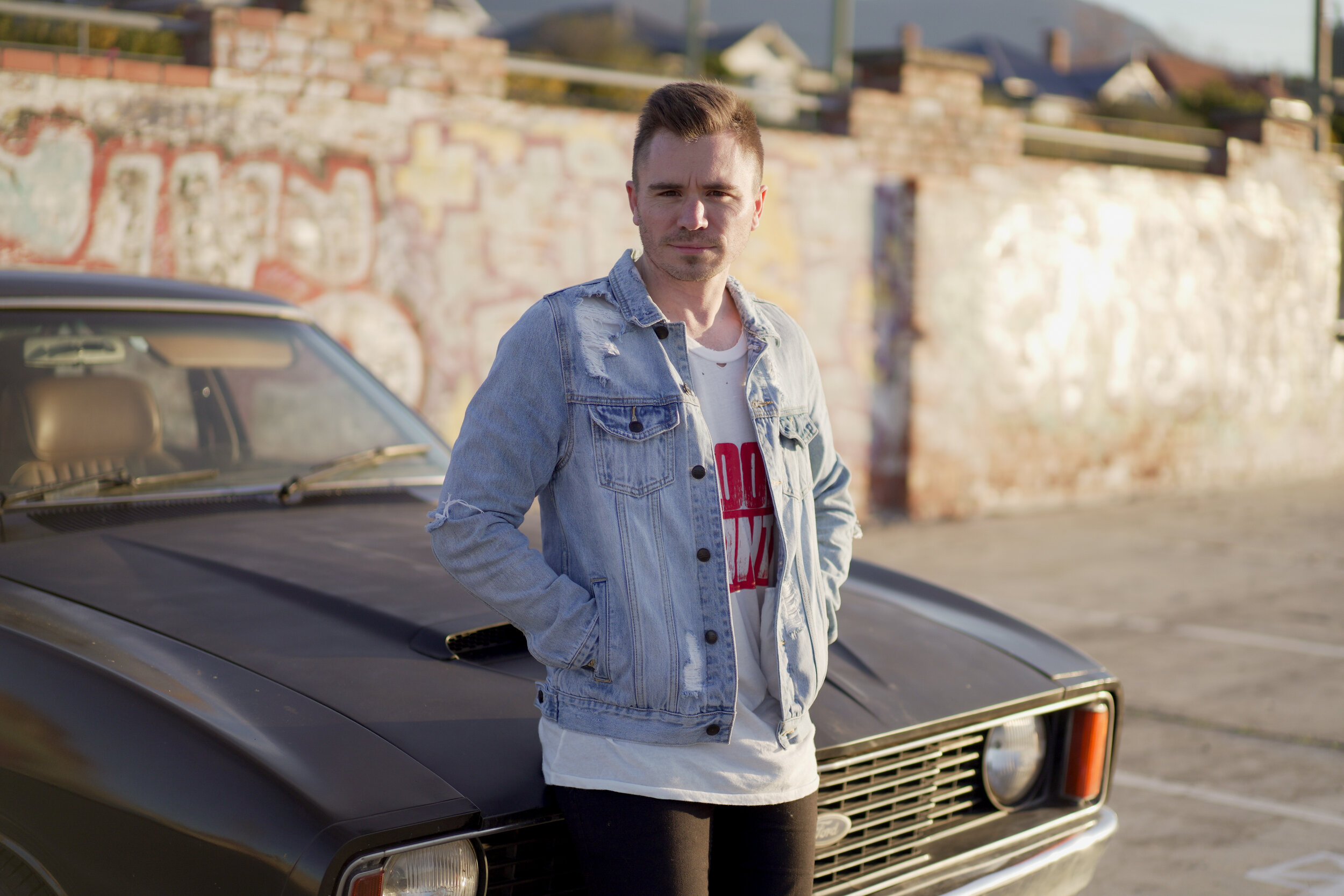Cult Projections: What’s your filmmaking background? Are you self-taught? What cameras and gear did you first start mucking around on?
Sam: I attended TAFE here in Tassie which was a great experience. But by and large my learning was self-taught, through a group of friends, that I still make films with to this day. We started out in the early days of DV, and it’s been great evolving with digital tools and the opportunities they offer.
CP: What horror movies made you want to become a horror filmmaker?
Sam: Well my horror journey started when I was around sixteen and that’s actually how I bonded with the guys I make movies with. We were all big fans of anything George A. Romero, John Carpenter and Sam Raimi. The Exorcist was a big one for me and is still so effective to this day. The blood and guts of The Evil Dead and always fun. Probably what has been the biggest influence would be The Texas Chain Saw Massacre, and you can certainly see inspiration from it in both Blood Hunt and The Slaughterhouse Killer.
CP: What separates the okay horror movies from the great horror movies?
Sam: I think for me it would have to be the level of authenticity. Take the example of Texas Chain Saw again, it’s so grounded in reality that it still holds up today. You take a ghost story of the era and it feels quite cheesy by today's standards.
CP: What freedoms do you enjoy most about low-budget filmmaking? What limitations do you find the hardest to deal with?
Sam: The fact you’re completely independent with no one above you telling you what to do, or how to do it can be very freeing. The flip side of that though is that you are constantly battling with your limited resources and time.
CP: When you’re making a feature, how much of the movie is in the screenplay, how much is captured in the principal photography, and how much is made in the editing stages? What’s your favourite part of the process?
Sam: I really do enjoy the scripting process with my writing partner, Benjamin Jung-Clarke. We seem to get ourselves to a place where we are constantly trying to one up each other with whatever outrageous thing we can think up next. Because of our low budget nature, shooting is a pretty fast and furious affair. Which is why it’s so important to have our script just right.
CP: How do you feel about the use of violence in horror movies? When should violence be graphic and when should it be suggested?
Sam: Violence in the movies is always fun so I think it’s up to the creators to push it in whatever direction they choose. In our films quite often the violence has been quite suggestive rather than overly graphic, but if we had a few more dollars in the kitty I’m sure the blood would have been flowing a little more freely.
CP: Blood Hunt and The Slaughterhouse Killer present the narrative and the characterisations with an emphasis on realism, almost documentary-like. How do you strive for realism as a director? Do you use much improvisation?
Sam: As I mentioned earlier, scripting plays a big part for us and we don’t really experiment with improvisation that often. Both Ben and I come from regional areas of Tassie and we often draw on that, which we believe gives our dialogue a real authenticity for the characters we write. We also love shooting in real locations and we actually filmed portions of The Slaughterhouse Killer in a real, working abattoir.
CP: I’m assuming you’re a fan of practical effects. Who are your favourite special effects makeup artists? What movie has your favourite sfx makeup sequence?
Sam: Most people tend to go back to the great work done by people like Tom Savini, Rob Bottin, and of course Stan Winston. But the series that really does it for me is the Saw franchise for it’s brutal realism. Another big part of what makes the makeup work so well is the production design that also goes into it. It doesn’t get much more memorable than the reverse bear trap, the needle pit, and those ground-up rotting pig carcasses.
CP: Should there be any taboos in horror movies? Are there any left?? How responsible does a horror director need to be in this current climate?
Sam: Well I guess Cannibal Holocaust is probably the line for me.
CP: What would you tell budding horror filmmakers to pay closest attention to? What are the most important elements?
Sam: When it comes to any advice to early career film makers, it’s always just to go out there and give it a crack, which I wholeheartedly agree with. Find a group of likeminded people you can work with and don’t bow to anyone in regards to the story you want to tell or how to tell it. If you just want to make a dirty little slasher with mates, then do it. Don’t worry about what funding bodies, or film school teachers might be saying, because it’s your passion that will make you strive for what you love.
CP: What horror movies of the last few years have impressed you? Any filmmakers in particular you have your eye on?
Sam: Horror goes through cycles and whilst there are some great things still happening in the indy scene, I think there’s a lot of stuff, especially coming out of the studios that just isn’t that memorable. Of course you have your Ari Aster’s and your Jordan Peele’s, who are making great horror flicks, but we need more visionary directors like them to really take horror into new directions for mainstream audiences.
CP: Thanks Sam!



